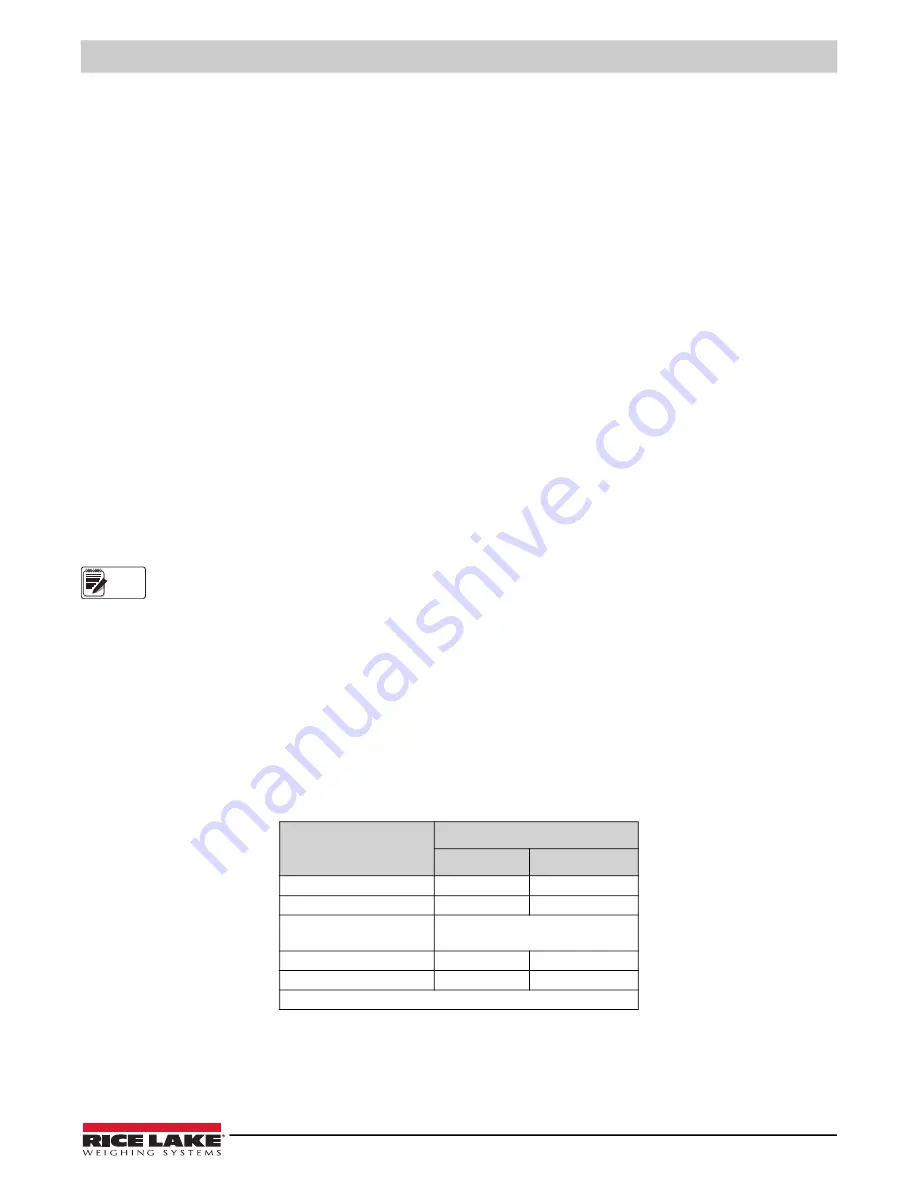
Appendix
© Rice Lake Weighing Systems
●
All Rights Reserved
95
10.3 Serial Scale Interface
Serial ports 3, 4 and any expansion ports can be configured for serial scale input. The serial scale function allows other scale
indicators to send gross, net, or tare weight data to the
820i
. Once a serial port has been configured to accept scale data, the
data format can be customized to match the data stream sent by that indicator.
To configure a serial scale, do the following:
1. Under the SERIAL menu, set the INPUT parameter for the selected port to SCALE (legal-for-trade serial scale) or
INDUST (industrial serial scale).
2. Return to the SCALES menu. Under CONFIG, drop down and select the serial port. If the serial scale is not shown,
press the
Change Type
softkey to select available serial scales, then use the navigational keys to select the serial
scale. Press
Add
to move the scale to the righthand column, the press
Done
.
3. Under the SERIAL menu, return to the selected port and set the format under the SFMT parameter to match the
format sent by the serial scale.
The default serial scale format is:
<2><P><W7.><U><M><S><CR><LF>
where:
<2>
STX character
<P>
Polarity
<W7.>
Seven characters of net data with decimal point
<M>
Mode
<U>
Units
<S>
Status
<CR>
Carriage return
<LF>
Line feed
Industrial serial scales (INDUST) do not require the
<M>
,
<U>
, and
<S>
identifiers. However, the units and number of
decimal places must be specified. Units can be selected from the FORMAT menu; decimal places should be indicated
on the w-spec identifier. For example, a seven-digit weight requiring two decimal places should be specified as
<W7.2>
rather than
<W7.>
.
See
for more information about stream formatting and format identifiers.
10.4 Local/Remote Operation
For truck scale and similar applications, local/remote support provides function equivalent to that of a legal-for-trade remote
display with keypad. Scale data from the local indicator is also displayed at the remote unit, and keypad input from the remote
allows transactions to be initiated from either the local or remote unit.
To configure for local/remote operation, first set up the local scale (including softkey assignments, truck mode, and database
information, as required). Use the SERIAL menu, serial commands, or
Revolution
to set the Local Unit serial parameters shown
in Table 10-6. Configure the remote indicator using the serial parameters listed for the Remote Unit.
Serial
Configuration Parameter
Parameter Value
Local Unit
Remote Unit
EDP.INPUT#
p
CMD
DISPLAY
EDP.STREAM#
p
DISPLAY
KEYPAD
EDP.BAUD#
p
115200 preferred; local and remote
values must match
EDP.ECHO#
p
OFF
OFF
EDP.RESPONSE#
p
ON
ON
In the listed serial commands, p represents the serial port number.
Table 10-6. Local/Remote Configuration Parameters
Note
Summary of Contents for 820i
Page 115: ......






























